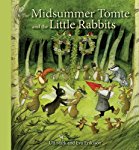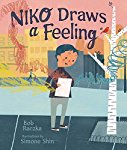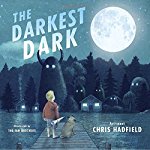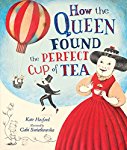Sometimes, when our dreams seem hopelessly out of reach, the best thing to do is to listen to stories about people who have kept on trying, kept on dreaming. Hearing about their triumphs over adversity helps us to keep the faith.
Over the centuries many groups of people have found it particularly hard to pursue their dreams because people have stood in their way and have prevented them from moving forward towards their goals. One of these groups has been women, who have been told that they are lesser people because of their gender. Thankfully, some women refused to give in or give up. They persisted!
Today's Book of Hope offers us inspiring stories about women who would not accept the words of doubters and naysayers.
 She persisted: 13 Women who changed the world
She persisted: 13 Women who changed the world
Over the centuries many groups of people have found it particularly hard to pursue their dreams because people have stood in their way and have prevented them from moving forward towards their goals. One of these groups has been women, who have been told that they are lesser people because of their gender. Thankfully, some women refused to give in or give up. They persisted!
Today's Book of Hope offers us inspiring stories about women who would not accept the words of doubters and naysayers.
 She persisted: 13 Women who changed the world
She persisted: 13 Women who changed the world
Chelsea Clinton
Illustrated by Alexandra Boiger
Nonfiction Picture Book
For ages 6 to 8
Penguin, 2017, 978-1-5247-4172-3
For centuries society has told women that they could not
get an education, could not work outside the home, could not own property,
could not drive a car, could not do the same jobs as men, could not vote. They
have faced a wall of could nots and should nots. And yet they have persisted
and did those things that mattered to them most, in spite of it all.
In this book
readers will meet thirteen women who refused to toe the line; who refused to accept
that they were lesser people because they were born female. The first woman we
meet is Harriet Tubman, who escaped from a life of slavery and who then chose to
be a conductor on the Underground Railroad. Every time she helped someone
escape to freedom Harriet risked her own freedom, and every person she assisted
“arrived safely.”
Nellie Bly was a
reporter, and in part she took on the challenge of reporting the news because a
male writer said that working women were “a monstrosity.” These words made
Nellie want to prove that women could do anything that they wanted to. She set
about exposing shocking stories to help others. For one story she pretended to
be a patient in a mental hospital so that she could tell the world about the
horrific way the patients were treated.
Oprah Winfrey’s
grandmother expected that her granddaughter would follow in her footsteps and
become a maid. Being both female and African American meant that very few doors
were open for Oprah to step through. Oprah refused to be locked into a life
that she did not want, and through hard work and determination she became “a
media superstar.”
For each of the
thirteen women featured in this book readers will read a little about their
life, and they will find a quote that beautifully captures each woman’s fighting
spirit. Throughout the book evocative pieces of artwork accompany the text to
give readers an altogether memorable reading experience.









